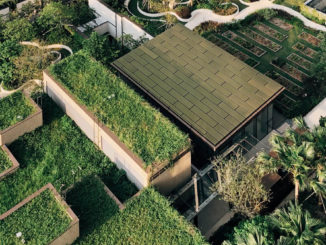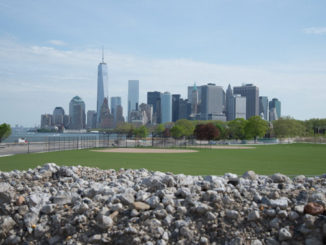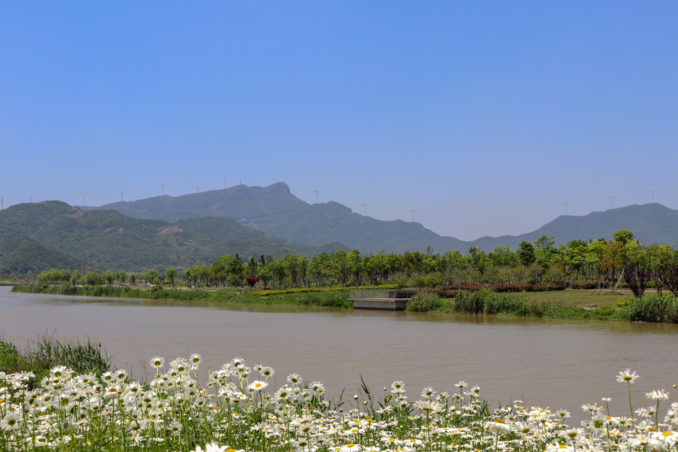
A river side landscape in East China interweaves ecology with amenity and integrates with its surrounds. Rhythms of spatial typologies interplay to create a rich environment achieved on a remarkably low budget. A multitude of nearby spaces range between open and expansive to intimate and secluded. Free movement and exploration is encouraged and habitats are established. Created adjacently to the grey infrastructure of a new development area, the landscape was soft completed in 2017 with fixtures to be added in the near future along with the completion of residential and commercial units.
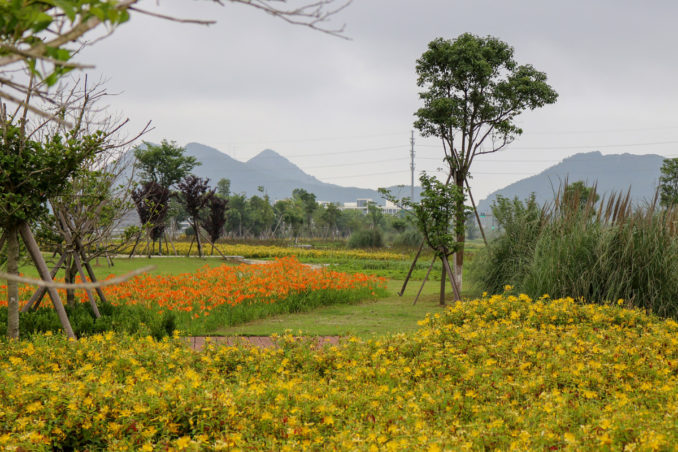
Site & Brief:
Xiangshan East Bay Landscape is located North east of the Zhejiang coastal town Xiangshan, Xiangshan East Bay (approximately 7km²) was diked from the sea and since the 1970’s mostly used for shrimp farming. More recently plans were made to develop the area into an industrial park mixed with residential developments and other supporting amenities. A large water body located centrally on the west side of the development zone branches out eastward into three main and two minor rivers that sweep around and intersect the zone. Planet Earth was tasked to design the public riverside landscape functioning to attract and serve settlement, land area totaling 65 Hectares, and developed a brief to transform the newly dug rivers into highly attractive destinations with an equally strong emphasis on each; user amenity, ecology and sustainability.

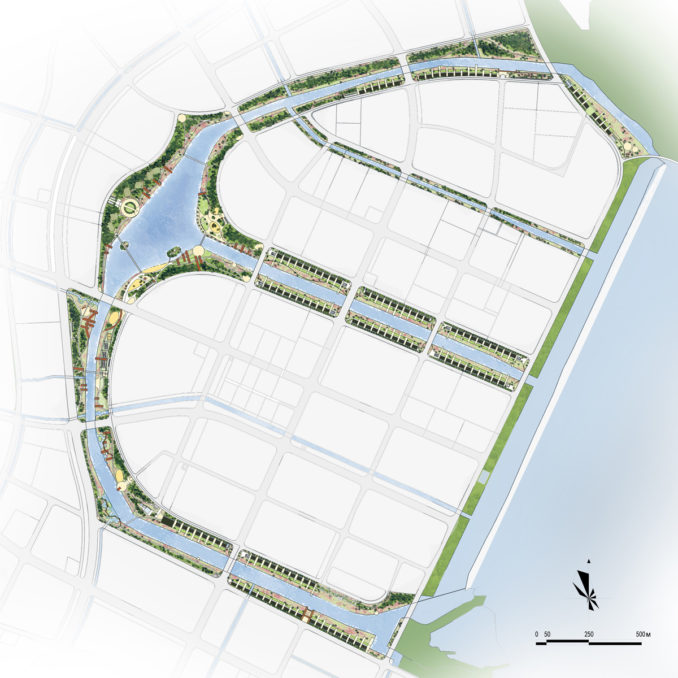
Design Theory and key Tactics:
The aim was to create an attractive new regional authentic eco-amenity landscape which embraced the entire zone and offered an abundance of varied spaces. The strategy focused on forming ecological habitats and environmental purification systems, interweaving these with amenity and other utilitarian functions in a way that would integrate the immediate and wider landscapes, resulting in a comprehensive landscape with a strong identity of place. Several design tactics were formed and deployed as a response to site context and strategy.
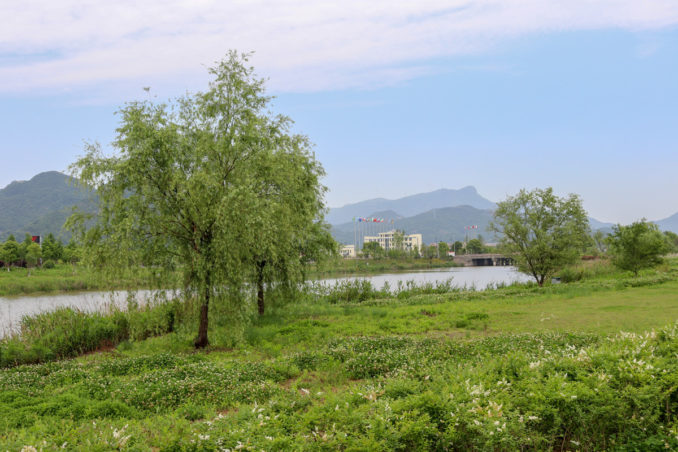
Often in landscapes, particularly in China, people are not able to explore freely off the paths or prescribed hard standing areas; one might possibly find some turf areas where amenity use is allowed, but mostly there will be signs politely asking not to stand on the grass. In addition to contrasting with this trend and the regimented factory work adjacent, Kaplan & Kaplan’s preference matrix influenced an important aspect of this scheme to encourage free movement and a sense of exploration; to allow for non-prescriptive circulation and personal or group discovery of intimate soft spaces and vantage points.
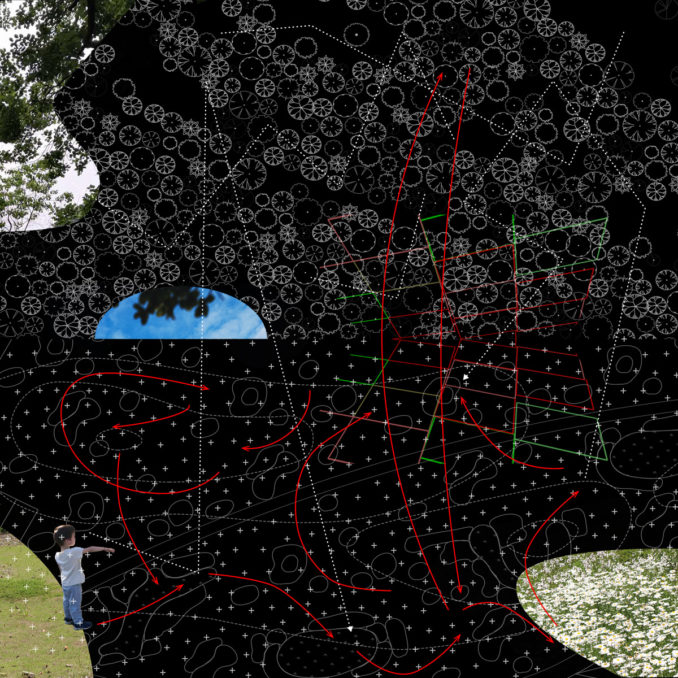
Xiangshan East Bay Landscape is a rich mixture of trees based on matrices derived from the surrounding outcrops is planted on bunds and mounding. These areas in tandem to functioning as an extended site buffer for the central areas, habitat of local provenance flora and significant carbon sink, serve as areas of free exploration and play; the bark chip ground is strewn with drifts of vegetation and where the canopy overhead opens up intimate lawn spaces.
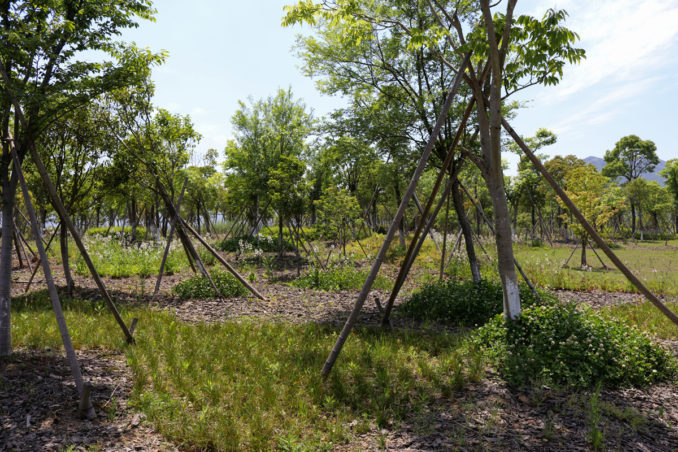
Along with the more linear riverside landscapes, a specific character results from a melodic composition and literal interpretation of high integration and harmony between commercial utility, public space and ecological habitat. Rhythms of spatial typologies join the highly built-up areas with the river; semi-private spill-out garden areas for commercial units intersect with open public landscape intersecting with dynamic marginal and field layer habitat.

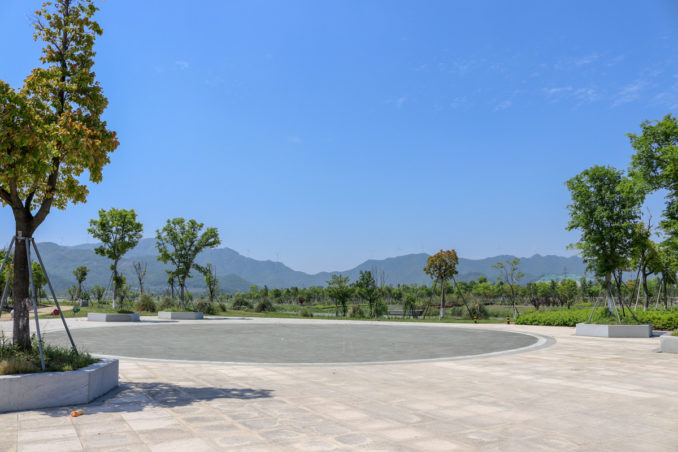

Xiangshan East Bay Landscape
Landscape Architect: Planet Earth Ltd.
Photo credits: Planet Earth Ltd.

